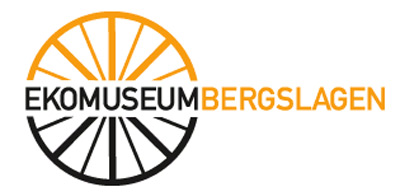Luigi Micheletti Award

The Bergslagen mining region in central Sweden has been the major source of iron and iron products since centuries due to the rich presence of minerals. The woods served as energy source – charcoal production. The water gave power through waterwheels. With its early iron industry this region is also the origin of the Swedish wellfare state. Remains, several hundred years old, can still be seen. Here are the mines, blast furnaces and ironworks – sites linking us with the people who created the first and most important industrial region in Sweden. The nature is at the same time still wild, with forests, hills, lakes and rapids which also attracts eco-tourism with activities like hunting, fishing, walking, camping.
A part of the Bergslagen region was made into an ecomuseum in 1986, in a time when several industries were closed down. The initiative came from the county museum of Dalarna, having seen the new idea being realized in ”Le Creusot”, Bourgogne in France, Seven municipalities in two counties – Dalarna and Västmanland – decided 1990 to collaborate in a trust together with the two county museums and the tourism agencies. The geographic area is about 200 kilometres long by 40-50 kilometres broad. There are about 85 000 inhabitants in the Ekomuseum area.
The aim of the Ekomuseum was to bring forward the fysical remains of the local industrial history and to strengthen the local identity; to make people proud of their background and the memories that the iron production have left behind.
The Ekomuseum got the opportunity to a strong developement with website, maps, information folders, guidebook, educational activities etc thanks to EU-funds after the Swedish membership in 1995 and have today about 48 well preserved sites to visit. Each object of interest is maintained either by the local authority or by an association of volonteers with support from a municipalcity. Activities on the sites mainly take place during the summer months. The Ekomuseum organization is after twenty years in a process of changes and a new way of working and keeping the museum together is today an issue for discussion. The ambition is to go more towards a network organisation and create larger and more distinct units of several small sites and to increase educational work towards the schools in the region.
The impact of the Luigi Micheletti Award
The prize opened doors, brought possiblities and made the Ekomuseum Bergslagen wellknown. We recieved a lot of goodwill and got a stronger position both in a national and in an international point of view. The volonteer associations felt pride, that still after eight years is noticeable. International interest increased and the Ekomuseum is studied as a possible model for own initiatives, both in Sweden and in other european countries. Today the Ekomuseum is involved in an Italian project (from IRES Piemonte) called Long Networks, ”Rete Lunghe” building relationship between european countries in ecomuseum issues and bringing other Swedish ecomuseums into the process.






